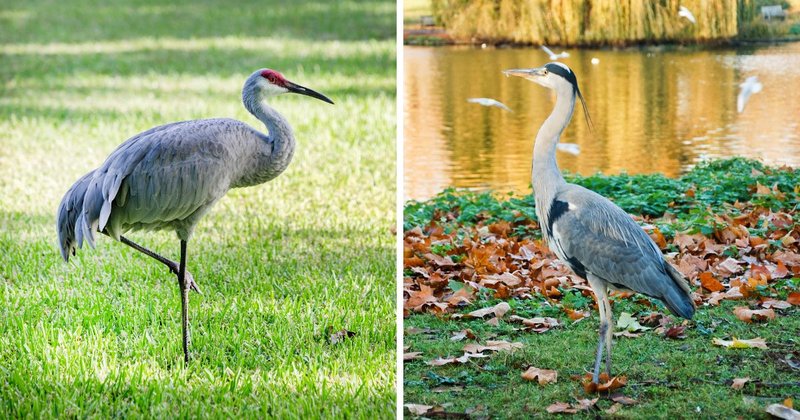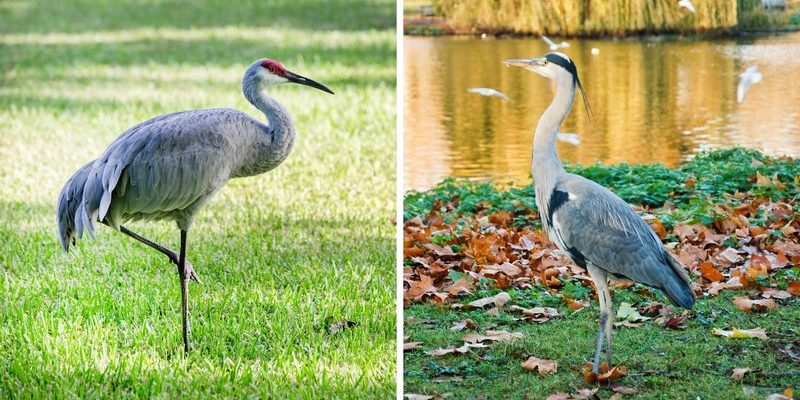
Cranes are omnivores, which means they don’t just stick to one type of food. Depending on the season and their location, they might munch on everything from grains to small animals. It’s a little like being at a buffet where you can choose a bit of everything! Understanding what cranes eat can give you insight into their behavior and the ecosystems they inhabit. So, grab a cup of coffee, and let’s explore the menu of these remarkable birds.
Understanding Crane Diet
Cranes have a varied diet that can change with the seasons. Here’s the thing: in the spring and summer, they tend to favor more protein-rich foods. This is when they often feast on insects like crickets, grasshoppers, and even small rodents. During these warmer months, you might catch them stalking through fields or wetlands, searching for these tasty morsels. Their long legs and necks allow them to reach into places where other birds might struggle.
In autumn and winter, cranes switch gears and often focus on grains and seeds. They might forage in agricultural fields, picking up leftovers from crops like corn or rice. This behavior not only shows their adaptability but also highlights their role in the ecosystem as they help disperse seeds and control insect populations. Honestly, if you were to watch a crane in action, you’d see how they employ a mix of patience and precision—standing still for long periods, waiting for the perfect moment to strike.
Their diet is crucial for their survival, especially during migration when they need to store energy for long flights. It’s fascinating to see how these birds have learned to thrive in various habitats, adapting their eating habits to what’s available.
How Cranes Hunt for Food
Cranes employ various techniques when it comes to hunting or foraging for food. You might be surprised to learn that they often use their sharp eyesight to locate prey from a distance. They have excellent vision, which allows them to spot insects and small animals even when they’re hidden in tall grass or reeds. It’s like having built-in binoculars!
Once they spot something to eat, cranes use their long, pointed bills to probe into the ground or water. This can look almost like a dance; they move with such grace and precision. If they’re fishing, for instance, they might stalk quietly along the edge of a pond or wetland, waiting for a fish to swim too close. When the moment is right, they strike quickly, using their beaks to catch their meal.
Using a technique called “tactile foraging,” cranes often feel for food under the water or soil. They can sense movements and vibrations, which helps them know when something is within reach. You might picture them as skilled detectives, feeling out their surroundings for clues of what’s lurking beneath the surface.
Foraging Techniques: A Closer Look
Foraging for food isn’t just a science; it’s an art form for cranes. When they’re out looking for grains or seeds, they often travel in groups, which can make the hunt more efficient. Imagine a family of cranes working together, each taking turns to probe the ground while others keep watch. This teamwork can not only help them spot food faster but also fend off potential predators.
They’re also known for using their environment to their advantage. For example, if there’s a heavy rain, cranes might flock to fields where water has pooled, as this brings worms and other invertebrates to the surface. It’s a bit like nature’s version of a buffet opening up just for them! Their ability to adapt to the environment shows just how resourceful they can be.
Additionally, cranes are known to be opportunistic feeders. This means they’ll take advantage of whatever food sources are available to them at any given time. If they find a field freshly plowed, they could be spotted darting in to grab exposed insects or seeds. It’s all about being flexible and seizing the moment, which is key to their survival.
Seasonal Changes in Crane Diet
As seasons change, so do the dietary needs of cranes. In spring, these birds return to their breeding grounds, and their diet shifts accordingly. During this time, they primarily seek out protein sources to help them build strength for nesting and raising their young. This includes insects, small animals, and amphibians. Just think about it; they need that extra energy to care for their chicks once they hatch!
Summer brings a different focus, with cranes often foraging in agricultural areas. They can be seen in fields, taking advantage of the grains that have matured. Corn, rice, and even soybeans become essential staples in their diet. It’s not just about filling their bellies; it’s also about providing ample energy for migration once the cooler months approach.
Once autumn rolls around, cranes start to prepare for their long migratory journey. They bulk up on carbohydrates found in grains and seeds, allowing them to store enough energy for the trek. Imagine them packing on the pounds, just like we do when preparing for a winter retreat! Their diet helps them build reserves that are crucial for survival during the migration.
The Importance of Wetlands in Crane Foraging
Wetlands play a critical role in the foraging habits of cranes. These ecosystems are rich in biodiversity, providing a habitat for a variety of food sources. It’s almost like a natural grocery store! Cranes, with their preference for wetland environments, take full advantage of this abundance.
In these areas, cranes can find everything from small fish and amphibians to a wealth of invertebrates like crabs and snails. They often hunt along marshy edges or shallow waters, where food is plentiful and easy to access. The ability to hunt in these diverse environments showcases their adaptability and resourcefulness.
Moreover, wetlands serve as safe zones. When foraging, cranes might be on high alert for predators. The thick vegetation and water provide cover and a sense of security. They can access food while minimizing the risk of becoming someone else’s next meal.
Challenges in Crane Foraging
While cranes are skilled foragers, they face challenges that can affect their access to food. Habitat loss is a significant issue. As wetlands are drained for agriculture or urban development, the natural habitats that provide food sources for cranes diminish. This loss forces cranes to adapt, often leading them to search further afield for resources.
Pollution is another hurdle. Contaminated water and soil can affect the health of both the cranes and their food sources. If the insects or plants they rely on become tainted, it can have a direct impact on the crane population. This is not just detrimental to the birds but also highlights the interconnectedness of ecosystems.
Additionally, climate change poses a growing threat to crane foraging habits. Alterations in weather patterns can change when and how food is available. Some foraging grounds may become submerged, while others may dry up, leading cranes to find new, often less suitable areas to hunt.
Cranes may look graceful and majestic, but their daily quest for food is a blend of skill and adaptability. From their varied diets to sophisticated hunting techniques, these birds have mastered the art of foraging in their environments. Their ability to switch up diets with the seasons and their teamwork during foraging make cranes truly remarkable creatures of the wild.
As we learn more about what cranes eat and how they hunt, we gain a deeper appreciation for their role in our ecosystems. Protecting their habitats and understanding the challenges they face can help ensure future generations of these beautiful birds thrive in the wild. So next time you see a crane gliding over a wetland, you’ll know there’s much more to their story than meets the eye—it’s all about survival and adaptation in the great outdoors.

